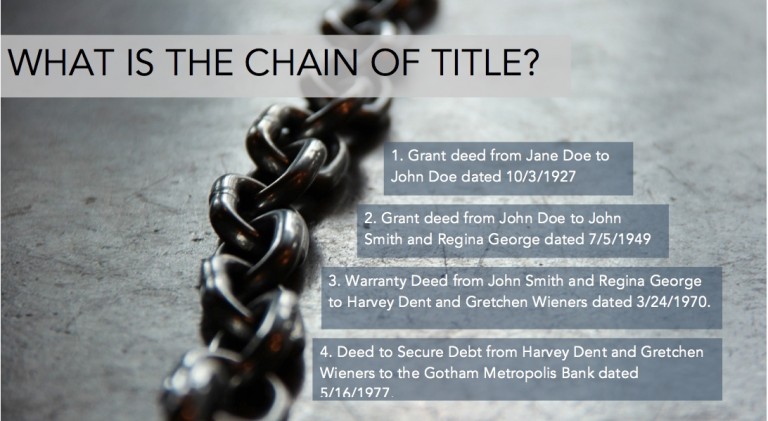Updated on September 5, 2023
When it comes to real estate, the term “Chain of Title” holds the key to understanding the complex world of property ownership. Understanding this vital concept is paramount. This blog post is your gateway to unraveling the complexities of the Chain of Title in real estate.
We’ll explore its significance, its use in resolving disputes, and provide a real-world example of a 24-month Chain of Title. So, whether you’re a real estate professional or a curious homeowner, let’s embark on this journey to demystify the Chain of Title and its practical implications in the world of real estate.
Key Takeaways: Understanding the Chain of Title in Real Estate
- In real estate, the Chain of Title represents the historical and public record of title transfers that individuals use to establish their interest in a property.
- Chain of Title becomes pivotal in disputes related to title priority, particularly in cases where competing lien holders claim the first interest in a property.
- Priority is established by examining public records, known as the Chain of Title, where the party that recorded first generally enjoys a higher position and priority claim.
- Besides listing property owners, the Chain of Title often includes details such as easements, CC&Rs, deeds of trust, judgment liens, tax liens, and death certificates, impacting ownership claims.
- The easiest way to ascertain the Chain of Title is by obtaining a preliminary title report from a reputable title company, offering an external perspective on property ownership history.
Real Estate Chain of Title
In real estate terms, the Chain of Title is exactly what it sounds like. It is the historical and public structure (chain) of transfers of title that claimants make to establish an interest in real property. The chain, in this case, is made up of the changes to title to a property between prior and new owners and/or owners and lien holders.
When is the Chain of Title used?
Chain of Title types comes to the forefront in disputes involving priority of title issues. An example of this would be a case where competing lien holder (lenders) claim to have the first interest in the property. One lender may then choose to quiet title and have the court declare who has priority. Priority is determined by examining the public record of recordings also known as the chain of title. If one party reordered first, then they are likely higher up in the chain of title and can then enjoy a priority claim to the property.
What does the Chain of Title consist of?
Apart from having a list of all of a property’s owners, Chain of Title often contains other information like easements, CC&Rs, deeds of trust, Judgement liens, tax liens, death certificates and many other types of documents that impact who holds priority claims to record title – who can claim a greater interest in the property.
The easiest way to determine the chain of title is to get a preliminary title report from a title company to see how a third party views the chain of title.
Our top rated real estate attorneys in Los Angeles have great experience with ownership disputes. These include Quiet Title, Partition, Business Ownership Disputes, and more. If you are looking for partition attorney in Los Angeles schedule a consultation, also you can call us at 310 954 1877, email at info@schorrlaw.test2.redblink.net or fill out the contact form on the side of this page.
